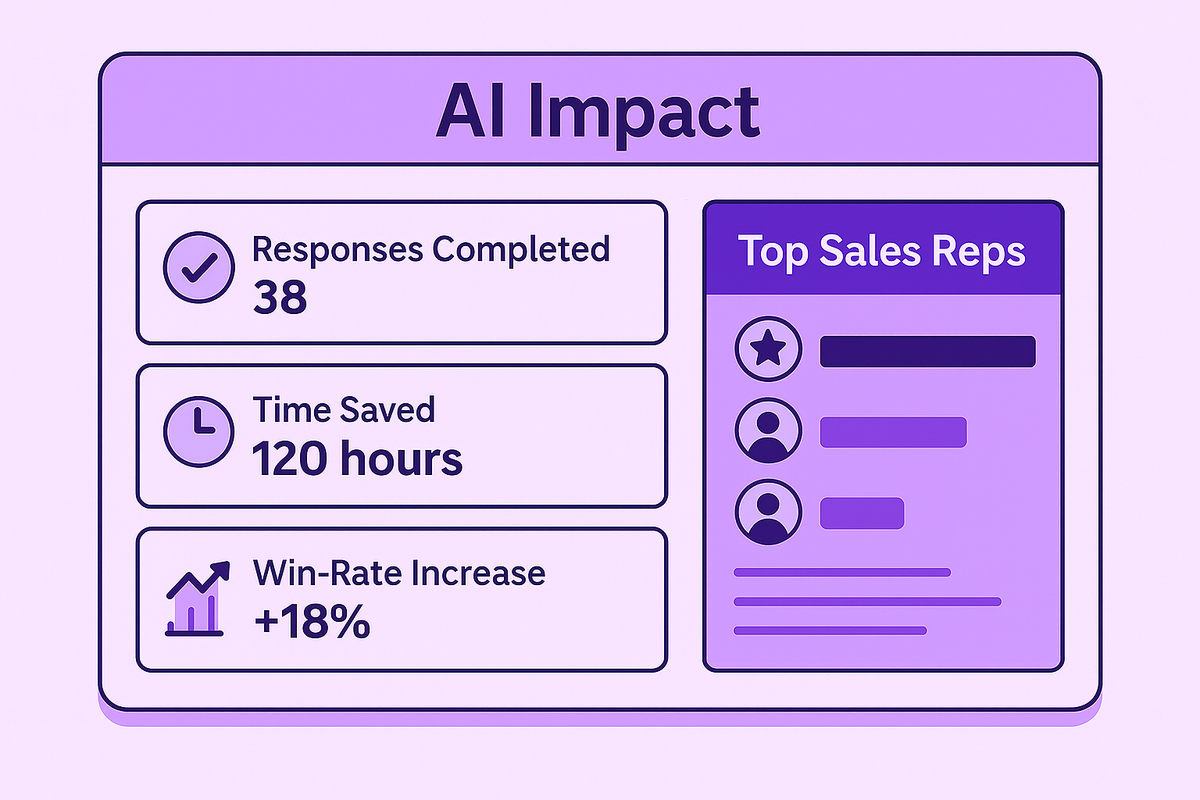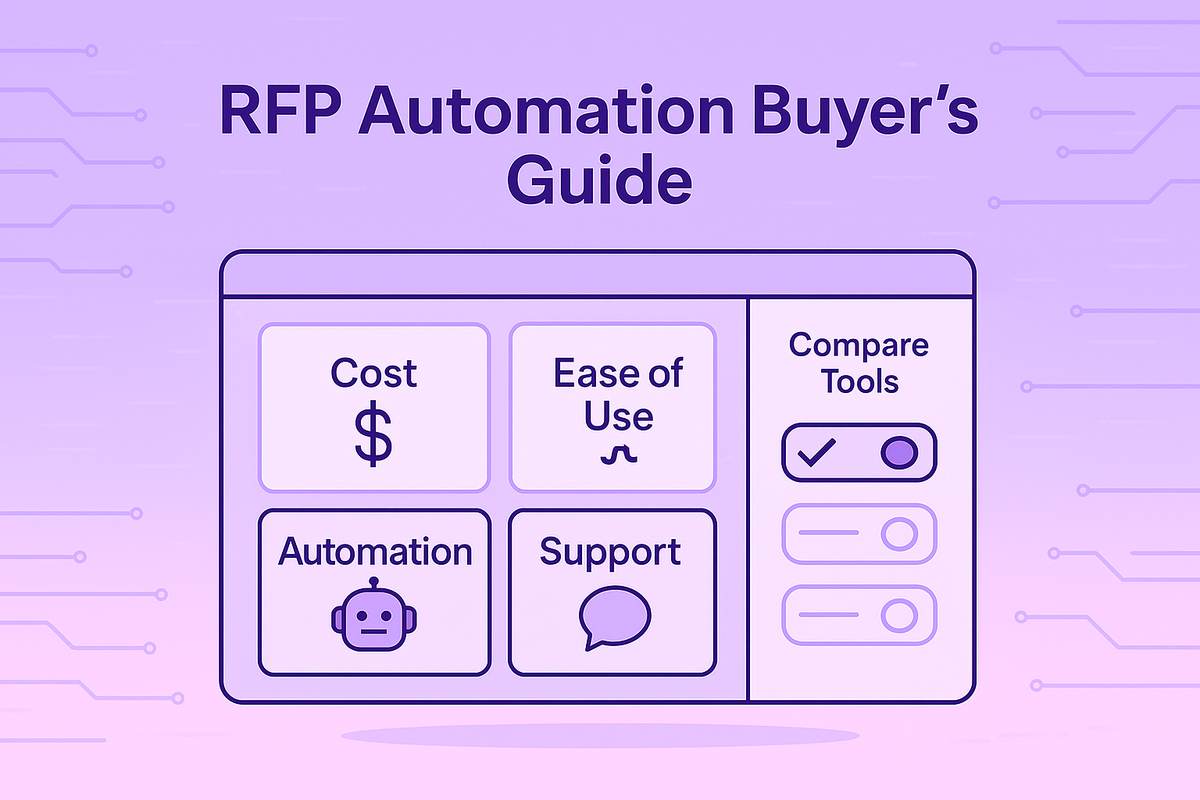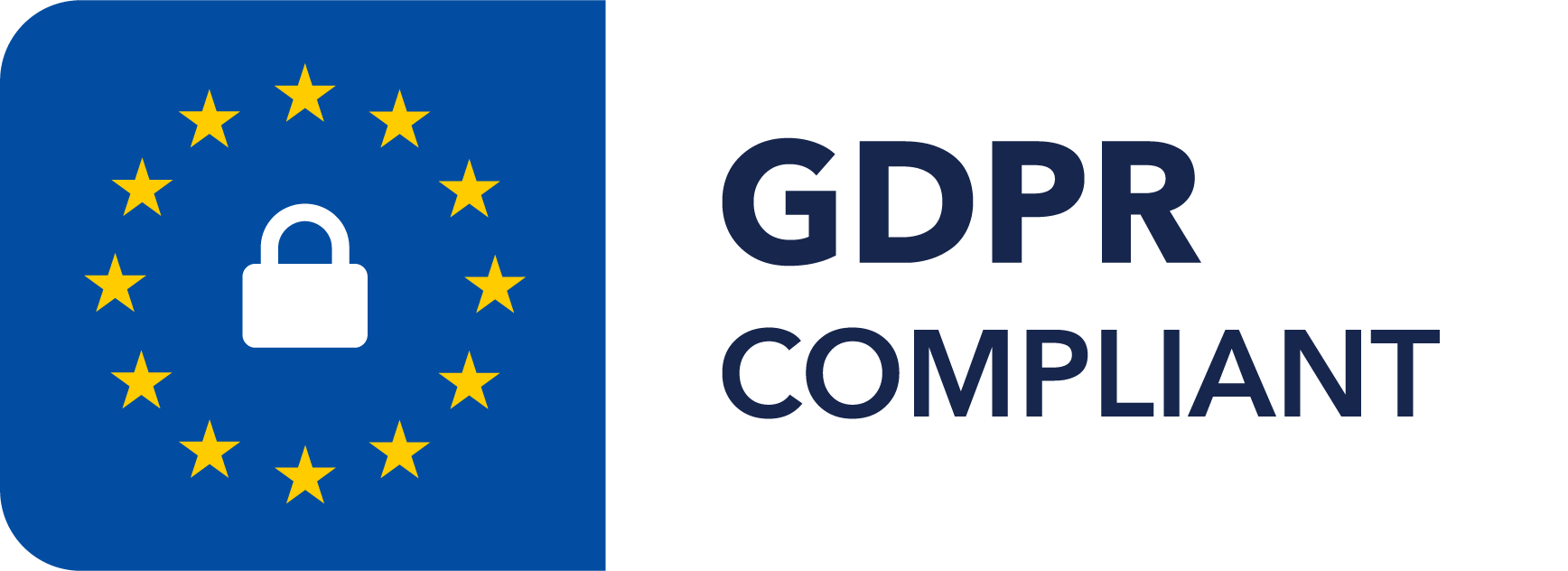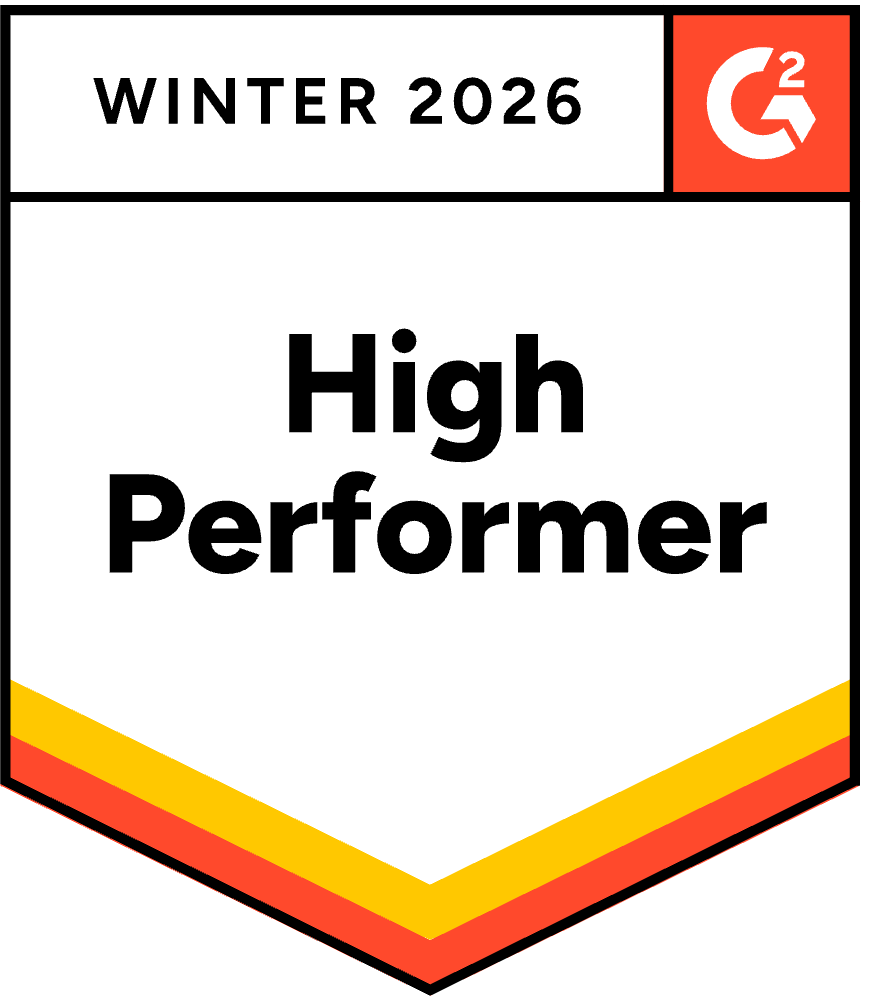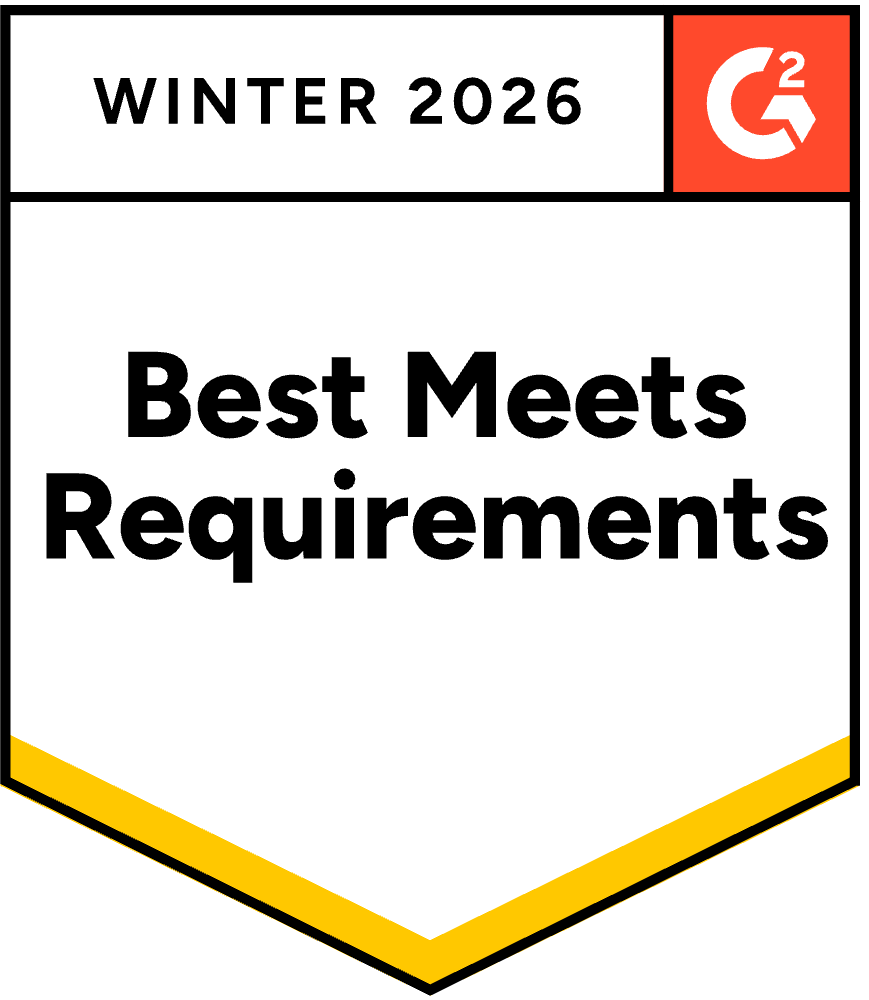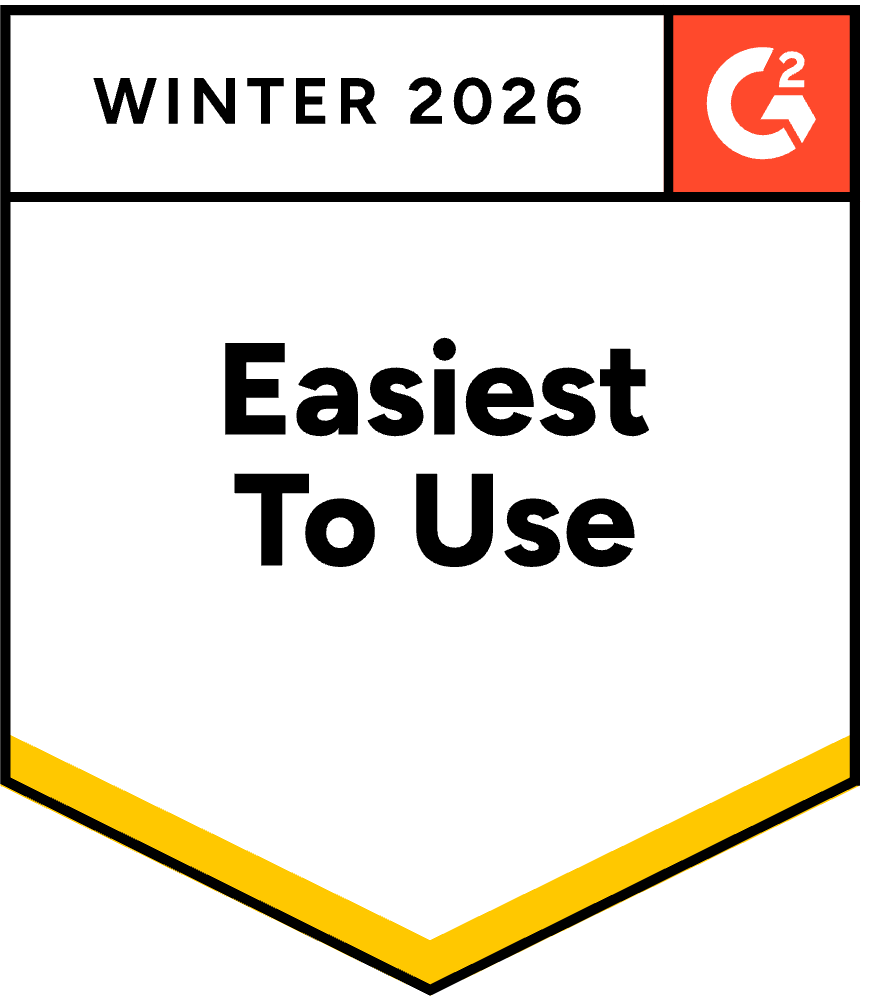A Guide to Team Collaboration on RFPs That Wins
June 20, 2025
By
Evie Secilmis
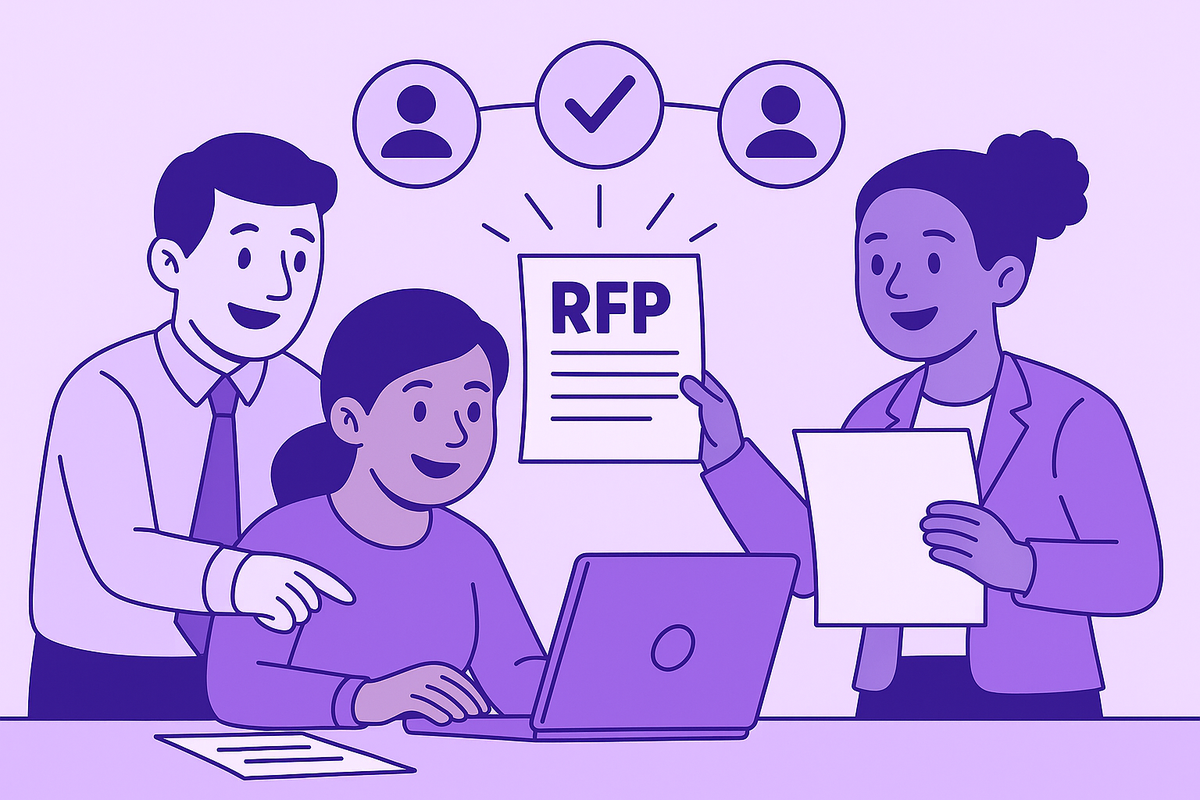
Sales Engineers don’t scale. Neither should your bottlenecks. You have a team of brilliant experts, yet every RFP response feels like a frantic, last-minute scramble. Sound familiar? The problem usually isn't your people—it's the broken process that gets in their way. When your experts are forced to dig through old documents or get lost in confusing email threads, their valuable time is wasted. This guide is all about building a better system for team collaboration on RFPs. We'll show you how to create a structured environment where your team can shine, often with the help of a dedicated collaborative rfp tool like Iris RFP.
In many teams, RFPs stall because one person is expected to quarterback the entire process — juggling intake, drafting, routing, and final submission. But the opposite extreme isn’t much better.
Sometimes everyone is involved. And that’s where the chaos begins.
Understanding the RFP Landscape
Before you can streamline your response process, you need a solid grasp of the terrain. The world of proposals is filled with acronyms and multi-step procedures that can feel overwhelming. But once you understand the core components—what each document is asking for and the typical flow of the process—you can approach each request with clarity and confidence. Think of this as your map to the entire RFP ecosystem. Knowing the difference between an RFI and an RFQ, or recognizing where you are in the process, is the first step toward building a strategy that helps you win more deals without burning out your team.
What is an RFP?
Let's start with the big one: the RFP, or Request for Proposal. At its heart, an RFP is a document a business or organization uses to solicit help with a specific project. They know what problem they need to solve, but they’re looking for qualified vendors to propose the best way to solve it. It’s an invitation to showcase your expertise and present a detailed plan. A well-crafted RFP from a client helps them find the right partner, but for you, it’s a golden opportunity to demonstrate your value beyond just a price tag. It’s your chance to tell your story, detail your approach, and prove why your solution is the perfect fit for their unique needs.
RFP vs. RFI vs. RFQ: Knowing the Difference
It’s easy to get lost in the alphabet soup of sales documents, but knowing the difference is key. While an RFP asks vendors to propose a solution, an RFI (Request for Information) is used for market research. The client is gathering general information to understand what solutions are even available. An RFQ (Request for Quote), on the other hand, is all about the price. The client knows exactly what they want and is simply comparing costs from different vendors. Recognizing which document you’ve received tells you exactly what the potential client is looking for, allowing you to tailor your response and focus your energy where it matters most.
The Typical RFP Process Steps
The RFP process isn't a single event but a series of steps that guide both the client and the vendors from a project idea to a signed contract. It usually begins with the client gathering their internal team to outline all the project requirements. From there, they write and issue the RFP document. Your team then gets to work, reviewing the request and submitting your proposal. After the deadline, the client reviews all the submissions, often shortlisting a few vendors for follow-up questions or presentations. Finally, they select the best fit and move forward with a contract. Understanding this lifecycle helps you anticipate next steps and manage your internal timelines effectively.
What We Mean by Team Collaboration
Responding to an RFP is rarely a solo mission. It’s a team sport that requires seamless coordination between sales, marketing, legal, product experts, and IT. Without a solid collaborative framework, important details get missed, messaging becomes inconsistent, and deadlines are jeopardized. True collaboration means every stakeholder can contribute their expertise efficiently, review content easily, and stay aligned on the overall strategy. By using smart workflows and the right AI deal desk solution, teams can transform a chaotic process into a smooth, well-oiled machine, resulting in higher-quality proposals that are submitted on time, every time.
The Hidden Cost of “Too Many Cooks”
We hear it all the time:
“It’s a team effort, so the whole team should be in the doc.”
But when five people are editing the same spreadsheet, answers get overwritten. Legal’s waiting on Sales. Sales is waiting on Product. Product is waiting for someone to assign ownership. No one’s sure which version is final.
This isn’t collaboration — it’s confusion with a Google Doc.
More access without structure = more delays, not fewer.
The Impact of Poor Communication
This kind of disorganized free-for-all isn’t just messy; it’s actively damaging your chances of winning. When clear communication breaks down, teams miss important details, send mixed messages, and blow past deadlines. This often happens because information is trapped in different places, key experts are too busy to respond, and priorities are misaligned. Without good teamwork, misunderstandings turn into delays, and what should be a coordinated effort becomes a frantic scramble. Every moment spent tracking down the right person or the latest version of an answer is a moment you’re not spending on crafting a winning proposal. Ultimately, this confusion doesn’t just slow you down—it can cost you the deal.
The Fix Isn’t “More People” — It’s Smart Collaboration
That’s where a modern AI RFP software platform like Iris comes in. Iris isn’t just about adding users — it’s about assigning ownership with clarity, context, and control.
With Iris, your team can:
- Assign specific sections or questions to the right subject matter experts
- Use role-based permissions to prevent accidental edits or duplicate work
- Keep everyone aligned in one live workspace — no version confusion, no “final_final2.docx”
- Let AI handle the first draft of repetitive answers to reduce human effort entirely
Whether your team has one owner or ten collaborators, Iris makes sure the work moves forward without stepping on itself.
The Real-World Benefits of Working Together
When you shift from chaotic group edits to structured teamwork, the results aren't just theoretical—they show up in your win rates. True collaboration helps you gather ideas from every corner of the company, giving you a complete and compelling picture of what you offer. Instead of a disjointed document, you get a proposal with a clear, consistent message because every team member can understand their roles and contribute their best work without confusion. This isn't just about making the process smoother; it's about creating a stronger final product.
Ultimately, this approach directly impacts the quality of your submission. Better teamwork leads to better content, which is what separates a winning proposal from the rest. By bringing sales, product, and legal experts together in a streamlined workflow, you eliminate the endless email chains and version control headaches that slow you down. Everyone works from a single source of truth, which means projects stay organized, on schedule, and focused on what truly matters: delivering a response that wins the deal.
What It Actually Enables: Async Work That Works
Multi-user access isn’t about turning RFPs into a group project. It’s about distributed ownership with clear boundaries— and letting AI handle as much as possible.
That means:
- One person can upload and delegate — and then step away.
- SMEs can answer just their piece, without digging through 40 questions.
- Legal and Sales can work in parallel — not ping-pong over email.
- AI can suggest answers from your knowledge base in real time.
SE time on RFPs drops from 50% to 12%.
Knowledge reuse goes up by 312%.
RFPs get submitted — even when someone’s out of office.
This is what scalable, collaborative RFP response actually looks like.
How to Tell If You Have a Collaboration Problem
Ask yourself:
- How many people worked on your last RFP?
- How many versions of the doc were floating around?
- How often did answers get duplicated, overwritten, or lost?
- If someone took PTO mid-way, did the process stall?
If that sounds familiar, you don’t just need more access — you need a system that makes access useful.
Actionable Best Practices for Team Collaboration on RFPs
Great collaboration doesn’t just happen; it’s designed. Moving from a chaotic, "too many cooks" approach to a streamlined, effective process requires a clear plan. It’s about giving your team the structure they need to work together efficiently, without stepping on each other's toes. When you establish a solid framework, define clear roles, and build a supportive culture, you create an environment where your team can produce its best work. These practices aren’t just about finishing RFPs faster—they’re about submitting higher-quality proposals that actually win deals.
Establish a Solid Project Management Framework
Think of your RFP process like any other important project. It needs a beginning, a middle, and an end, with clear milestones along the way. A strong project management framework prevents last-minute scrambles and ensures everyone is on the same page from day one. This structure is your roadmap to a successful submission. It turns a daunting document into a series of manageable tasks, making the entire process less stressful and more predictable for everyone involved. Without this foundation, even the most talented team can struggle with missed deadlines and inconsistent quality.
Hold a Kickoff Meeting for Every RFP
Before anyone writes a single word, get the core team together for a kickoff meeting. This is your chance to align on the strategy, timeline, and individual responsibilities. Use this time to discuss the client's needs, your unique value proposition, and who will own each section of the response. According to best practices in RFP collaboration, a kickoff ensures everyone understands the game plan, which dramatically reduces confusion down the line. It sets the tone for a coordinated effort and makes sure the project starts with momentum and clarity.
Break Down the Project with Clear Deadlines
An RFP can feel like a massive undertaking, so break it down into smaller, more achievable tasks. Assign each task to a specific person and give it a firm due date. This creates a clear path to completion and helps you track progress along the way. Instead of one giant deadline for the final submission, you’ll have a series of mini-deadlines for first drafts, reviews, and final approvals. This approach keeps the project moving forward and makes it easier to identify and address potential bottlenecks before they derail your timeline.
Conduct Post-Submission Reviews to Improve
The learning doesn’t stop once you hit "submit." After each RFP, hold a review meeting to discuss what went well and what could be improved. This is a crucial step for refining your process over time. Talk about communication breakdowns, content gaps, or timeline issues. If you won the deal, analyze what made your proposal stand out. If you lost, look for lessons you can apply to the next opportunity. This continuous feedback loop is what turns a good RFP team into a great one.
Define Roles and Communication Channels
Clarity is key to effective collaboration. When team members know exactly what they are responsible for and how they should communicate, work flows smoothly. Defining roles prevents duplicate effort and ensures that the right people are contributing their expertise at the right time. It’s not about limiting people; it’s about empowering them to focus on their specific contributions. A clear communication plan also eliminates the noise of scattered emails and messages, keeping everyone focused and aligned within a central channel.
Leverage Your Sales Team's Customer Knowledge
Your sales team is on the front lines, and they have invaluable insight into the customer’s pain points and priorities. Lean on them to shape the narrative of your proposal, especially the executive summary. This section is your first and best chance to make an impression, and it should speak directly to the client's needs. As experts at Responsive point out, having sales write the executive summary ensures it’s tailored to the customer and sets a compelling tone for the entire document.
Involve Subject Matter Experts from the Start
Don’t wait until the last minute to pull in your subject matter experts (SMEs). Involving them early in the process gives them the context they need to provide thoughtful, accurate answers. It also respects their time by preventing a last-minute fire drill. When SMEs from product, legal, and security are part of the conversation from the kickoff meeting, you can identify potential issues early and ensure their contributions are seamlessly integrated into the final proposal, rather than feeling tacked on.
Create a Centralized Content Library
Stop reinventing the wheel for every RFP. A centralized content library is your single source of truth for approved answers, company boilerplate, case studies, and security information. This is where an AI-powered platform like Iris becomes a game-changer. By storing and organizing your best content in one place, Iris can help you generate accurate first drafts in minutes, freeing up your team to focus on strategic customization. This not only saves countless hours but also ensures consistency and accuracy across all your proposals.
Set Clear Communication Rules
Decide on a primary channel for all RFP-related communication and stick to it. Whether it’s a dedicated Slack channel, a Microsoft Teams group, or comments within your RFP software, centralizing communication keeps everyone in the loop and creates a searchable record of conversations and decisions. This simple rule prevents important information from getting lost in crowded email inboxes and avoids the confusion that comes from having conversations in five different places at once.
Foster a Winning Team Culture
Tools and processes are important, but they only work if you have a team culture that supports open collaboration. A winning culture is built on trust, mutual respect, and a shared commitment to excellence. It’s an environment where people feel valued for their contributions and are motivated to work together toward a common goal. This positive dynamic is often the secret ingredient behind the most successful RFP teams, as it encourages proactive problem-solving and a collective sense of ownership over the final product.
Encourage Continuous Learning and Skill Development
Invest in your team’s growth. Offer training opportunities that help them improve not only their writing and project management skills but also their ability to collaborate effectively. This could include workshops on persuasive writing, sessions on using your RFP software more efficiently, or team-building activities. When you show your team that you’re invested in their professional development, they’ll be more engaged and better equipped to handle the complex challenges that RFPs present.
Celebrate Your Wins as a Team
When you win a deal, make sure to celebrate it as a team. Acknowledging the hard work and collective effort that went into the proposal reinforces positive collaboration and boosts morale. A simple shout-out in a company-wide meeting or a team lunch can go a long way in making people feel appreciated. Recognizing these successes reminds everyone that their contributions matter and motivates them to bring that same energy and commitment to the next project.
Create a Safe Environment for Sharing Ideas
The best ideas often come when people feel safe enough to speak up. Foster an environment where every team member, regardless of their role or seniority, feels comfortable sharing suggestions, asking questions, and even challenging the status quo. This concept of psychological safety is critical for innovation and problem-solving. When your team isn’t afraid of being judged or dismissed, you’ll get more creative solutions and catch potential mistakes before they make it into the final document.
How to Measure the Success of Your Collaboration Efforts
You can’t improve what you don’t measure. Once you’ve implemented new collaboration practices, you need a way to track whether they’re actually working. By focusing on a few key metrics, you can get a clear picture of your team’s performance and identify areas for further improvement. These measurements provide concrete evidence of your progress and help you make data-driven decisions to refine your process. They transform the abstract goal of "better collaboration" into tangible outcomes that impact your bottom line.
Track Your Win Rate
Your win rate is the ultimate measure of success. It’s the percentage of RFPs you submit that result in new business. If your collaboration efforts are leading to higher-quality, more customer-centric proposals, you should see your win rate increase over time. This metric directly connects your internal processes to business outcomes, making it one of the most powerful indicators that your new approach is paying off. A rising win rate is a clear sign that your team is working together more effectively to create compelling, successful proposals.
Monitor Time Spent on Responses
Efficiency is another critical sign of successful collaboration. Start tracking the average amount of time it takes your team to complete an RFP, from kickoff to submission. As your processes become more streamlined and tools like a centralized content library are adopted, you should see this number go down without sacrificing quality. Reducing response time means your team can handle a higher volume of RFPs, which directly supports business growth. It’s a clear indicator that your team is working smarter, not just harder.
Gather Direct Team Feedback
The numbers only tell part of the story. It’s just as important to check in with your team and gather their qualitative feedback. Are they feeling less stressed? Do they find the new process easier to follow? Use simple surveys or informal check-ins to gauge team satisfaction and morale. A happy, engaged team is a productive team. If your team members feel that collaboration has genuinely improved, that’s a significant win in itself and a strong predictor of long-term success.
Frequently Asked Questions
What's the single most important first step to fix our chaotic RFP process? Start by holding a kickoff meeting for every single RFP. It sounds simple, but getting the core team aligned on a strategy, timeline, and individual responsibilities from the very beginning prevents so much confusion later on. This meeting establishes the RFP as a structured project rather than a frantic scramble to the finish line.
Our subject matter experts are always busy. How can we get them to contribute without creating a bottleneck? Respect their time by being incredibly specific with your requests. Instead of sending them the entire document and asking for their input, use a system that allows you to assign individual questions directly to them. This way, they can provide their expert answers quickly without having to read through dozens of irrelevant sections, making it much easier for them to help.
We're a small team. Is a dedicated RFP tool really necessary for us? A dedicated tool isn't about the size of your team, but the efficiency of your process. Even for a small team, a platform that centralizes your best content and helps automate repetitive answers can save a massive amount of time. It allows a few people to accomplish what would normally require a much larger team, helping you respond to more opportunities without burning out.
How do we solve the version control nightmare of everyone working in different documents? The best way to solve this is to eliminate multiple documents entirely. Move your work into a single, centralized platform where everyone collaborates in real-time. When your entire team works from one source of truth, you never have to wonder if you're looking at the latest version. All edits, comments, and approvals happen in one place, which ends the cycle of emailing attachments back and forth.
Besides our win rate, what's a good way to know if our collaboration is improving? Pay close attention to the time it takes to complete a response. If you're spending fewer hours on each proposal without sacrificing quality, it's a strong sign that your process is becoming more efficient. You can also simply ask your team. If they feel less stressed and more clear on their roles, you're definitely moving in the right direction.
Key Takeaways
- Define Clear Roles to Prevent Chaos: Stop the "too many cooks" problem by moving away from disorganized group edits. Assign specific sections to the right experts to ensure clear ownership, prevent duplicate work, and hold everyone accountable for their part.
- Treat Every RFP Like a Project: Create a repeatable path to success with a solid framework. Always start with a kickoff meeting to align on strategy, break the work into smaller tasks with firm deadlines, and conduct a post-submission review to improve your process for next time.
- Centralize Your Content and Communication: Use a single platform as your source of truth for approved answers and team collaboration. This eliminates version control headaches and scattered email threads, allowing your team to work together efficiently and build higher-quality proposals.
Related Articles
Share this post
Link copied!



